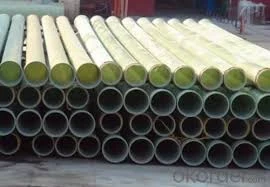
-
 Afrikaans
Afrikaans -
 Albanian
Albanian -
 Amharic
Amharic -
 Arabic
Arabic -
 Armenian
Armenian -
 Azerbaijani
Azerbaijani -
 Basque
Basque -
 Belarusian
Belarusian -
 Bengali
Bengali -
 Bosnian
Bosnian -
 Bulgarian
Bulgarian -
 Catalan
Catalan -
 Cebuano
Cebuano -
 China
China -
 China (Taiwan)
China (Taiwan) -
 Corsican
Corsican -
 Croatian
Croatian -
 Czech
Czech -
 Danish
Danish -
 Dutch
Dutch -
 English
English -
 Esperanto
Esperanto -
 Estonian
Estonian -
 Finnish
Finnish -
 French
French -
 Frisian
Frisian -
 Galician
Galician -
 Georgian
Georgian -
 German
German -
 Greek
Greek -
 Gujarati
Gujarati -
 Haitian Creole
Haitian Creole -
 hausa
hausa -
 hawaiian
hawaiian -
 Hebrew
Hebrew -
 Hindi
Hindi -
 Miao
Miao -
 Hungarian
Hungarian -
 Icelandic
Icelandic -
 igbo
igbo -
 Indonesian
Indonesian -
 irish
irish -
 Italian
Italian -
 Japanese
Japanese -
 Javanese
Javanese -
 Kannada
Kannada -
 kazakh
kazakh -
 Khmer
Khmer -
 Rwandese
Rwandese -
 Korean
Korean -
 Kurdish
Kurdish -
 Kyrgyz
Kyrgyz -
 Lao
Lao -
 Latin
Latin -
 Latvian
Latvian -
 Lithuanian
Lithuanian -
 Luxembourgish
Luxembourgish -
 Macedonian
Macedonian -
 Malgashi
Malgashi -
 Malay
Malay -
 Malayalam
Malayalam -
 Maltese
Maltese -
 Maori
Maori -
 Marathi
Marathi -
 Mongolian
Mongolian -
 Myanmar
Myanmar -
 Nepali
Nepali -
 Norwegian
Norwegian -
 Norwegian
Norwegian -
 Occitan
Occitan -
 Pashto
Pashto -
 Persian
Persian -
 Polish
Polish -
 Portuguese
Portuguese -
 Punjabi
Punjabi -
 Romanian
Romanian -
 Russian
Russian -
 Samoan
Samoan -
 Scottish Gaelic
Scottish Gaelic -
 Serbian
Serbian -
 Sesotho
Sesotho -
 Shona
Shona -
 Sindhi
Sindhi -
 Sinhala
Sinhala -
 Slovak
Slovak -
 Slovenian
Slovenian -
 Somali
Somali -
 Spanish
Spanish -
 Sundanese
Sundanese -
 Swahili
Swahili -
 Swedish
Swedish -
 Tagalog
Tagalog -
 Tajik
Tajik -
 Tamil
Tamil -
 Tatar
Tatar -
 Telugu
Telugu -
 Thai
Thai -
 Turkish
Turkish -
 Turkmen
Turkmen -
 Ukrainian
Ukrainian -
 Urdu
Urdu -
 Uighur
Uighur -
 Uzbek
Uzbek -
 Vietnamese
Vietnamese -
 Welsh
Welsh -
 Bantu
Bantu -
 Yiddish
Yiddish -
 Yoruba
Yoruba -
 Zulu
Zulu
corrosion solution
Corrosion Solutions Protecting Our Infrastructure
Corrosion is a natural process that leads to the gradual degradation of materials, particularly metals. It poses significant challenges in various industries, including construction, automotive, and marine sectors. The costs associated with corrosion-related damage can be staggering, often running into billions each year. As such, developing effective corrosion solutions is paramount for maintaining the integrity and longevity of structures and equipment.
One of the most common approaches to combat corrosion is the use of protective coatings. These coatings serve as a barrier between the metal surface and the corrosive environment. Options range from simple paints to advanced polymer-based coatings that provide enhanced protection. For instance, galvanization, which involves coating steel with a layer of zinc, is widely employed in construction to prevent rusting. The zinc acts sacrificially, corroding in place of the steel underneath.
Another effective method for corrosion control is cathodic protection. This technique uses electrochemical principles to protect metal surfaces, especially in pipelines and storage tanks. By applying a direct electrical current to the metal, or using sacrificial anodes made from more reactive metals, the rate of corrosion is significantly reduced. This solution is particularly valuable in environments where traditional protective coatings may fail.
corrosion solution

Material selection is also crucial in preventing corrosion. Employing corrosion-resistant materials, such as stainless steel or aluminum alloys, can mitigate the effects of corrosive environments. In specific applications, the use of non-metallic materials, like fiberglass or plastics, may offer an even more effective solution due to their inherent resistance to corrosion.
Regular maintenance and inspection play essential roles in corrosion management. Routine monitoring can identify early signs of corrosion, allowing for timely intervention. Advanced technologies, such as corrosion sensors and real-time monitoring systems, have emerged to enhance traditional inspection methods. These innovations help in making informed decisions regarding maintenance and repair.
In conclusion, addressing corrosion is essential for preserving the lifespan of our infrastructure and ensuring safety. By implementing a combination of protective coatings, cathodic protection, material selection, and regular maintenance, industries can effectively combat the detrimental effects of corrosion. As technology advances, we can expect the development of even more sophisticated corrosion solutions, safeguarding our assets for generations to come. The ongoing research and innovation in this field are crucial for sustainable growth and infrastructure durability.









